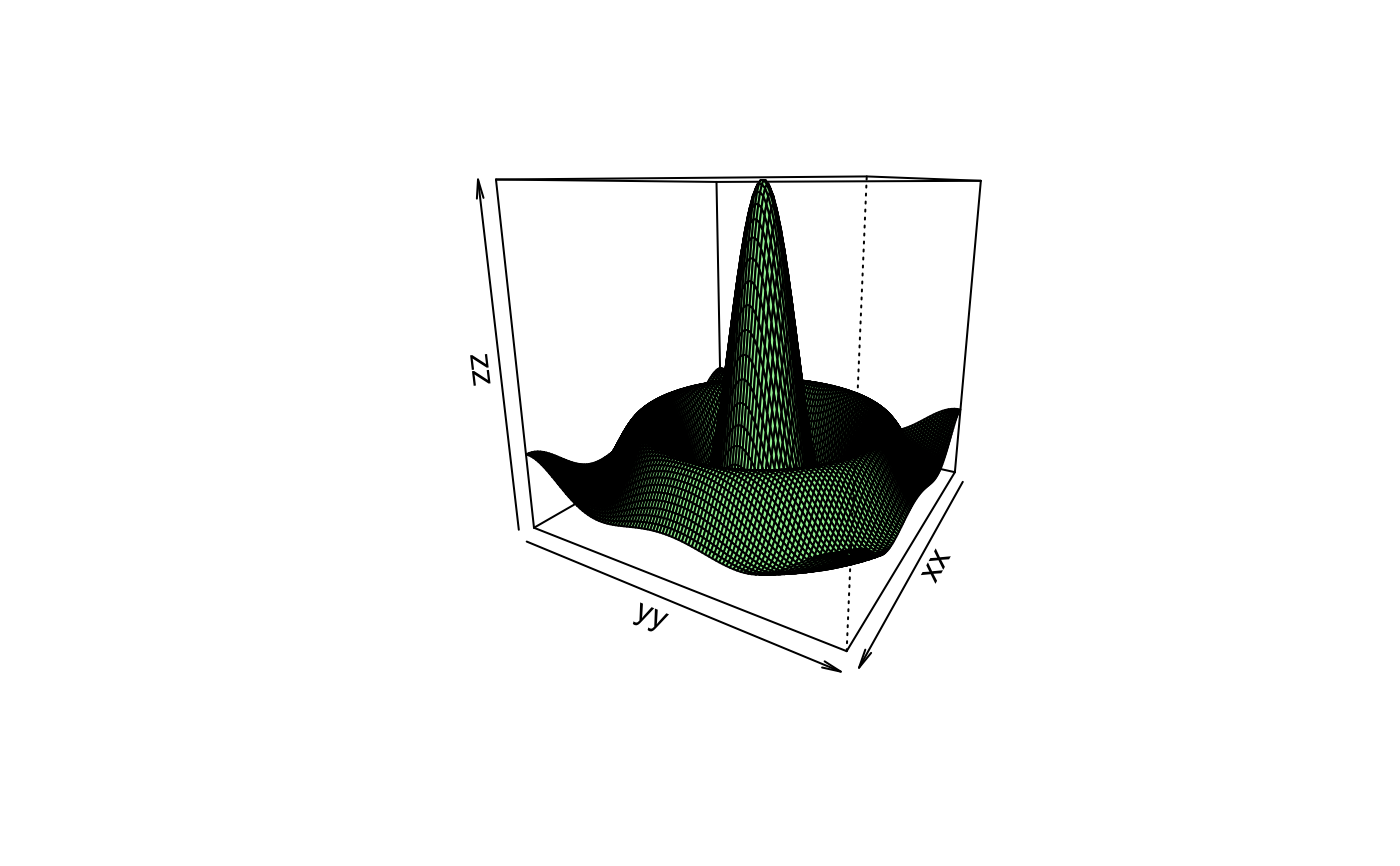r2stl takes numeric input exactly as with the persp
function. The output is a STL (stereolithography) file.
r2stl(
x,
y,
z,
filename = "3d-R-object.stl",
object.name = "r2stl-object",
z.expand = FALSE,
min.height = 0.008,
show.persp = FALSE,
strict.stl = FALSE
)Arguments
- x
A numeric vector with the x-coordinates to plot.
- y
A numeric vector with the y-coordinates to plot.
- z
A numeric
length(x)bylength(y)matrix with the z-coordinates to plot.- filename
The STL filename.
- object.name
The object that is being described must have a name specified inside the file. There's probably no point changing it from the default.
- z.expand
To force the 3D plot to touch all six faces of the imaginary cube that surrounds it, set this argument to
TRUE.- min.height
The minimum height for the printed material.
- show.persp
If set to
TRUEthen aperspplot of this object is shown on the screen.- strict.stl
If set to
TRUEit makes files smaller but isn't strictly proper STL format.
Value
The object returned when close is used to close the
connection to filename.
Details
To view and test the STL files before printing them can be done with many programs, for example an open-source option is Meshlab https://www.meshlab.net/.
Examples
# Let's do the classic persp() demo plot
x <- seq(-10, 10, length = 100)
y <- x
f <- function(x,y) {
r <- sqrt(x^2+y^2)
return(10 * sin(r) / r)
}
z <- outer(x, y, f)
z[is.na(z)] <- 1
file1 <- tempfile(fileext = ".stl")
r2stl(x, y, z, filename = file1, show.persp = TRUE)
 # Now let's look at R's Volcano data
z <- volcano
x <- 1:dim(volcano)[1]
y <- 1:dim(volcano)[2]
file2 <- tempfile(fileext = ".stl")
r2stl(x, y, z, filename = file2, show.persp = TRUE)
# Now let's look at R's Volcano data
z <- volcano
x <- 1:dim(volcano)[1]
y <- 1:dim(volcano)[2]
file2 <- tempfile(fileext = ".stl")
r2stl(x, y, z, filename = file2, show.persp = TRUE)
